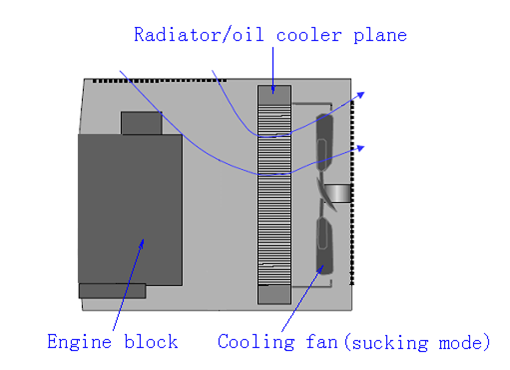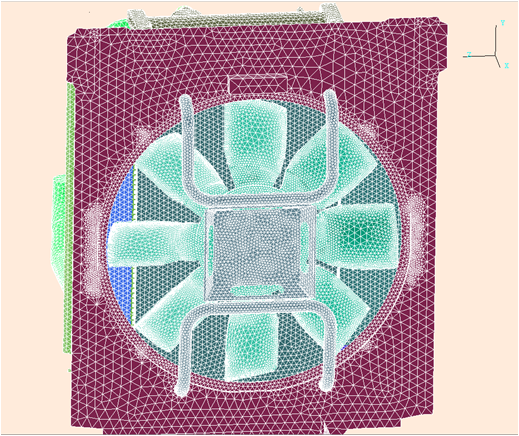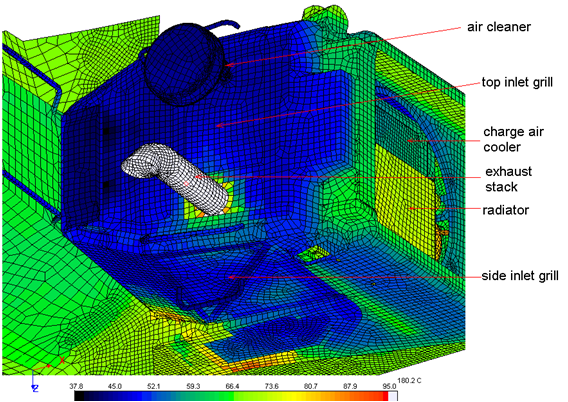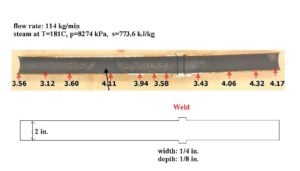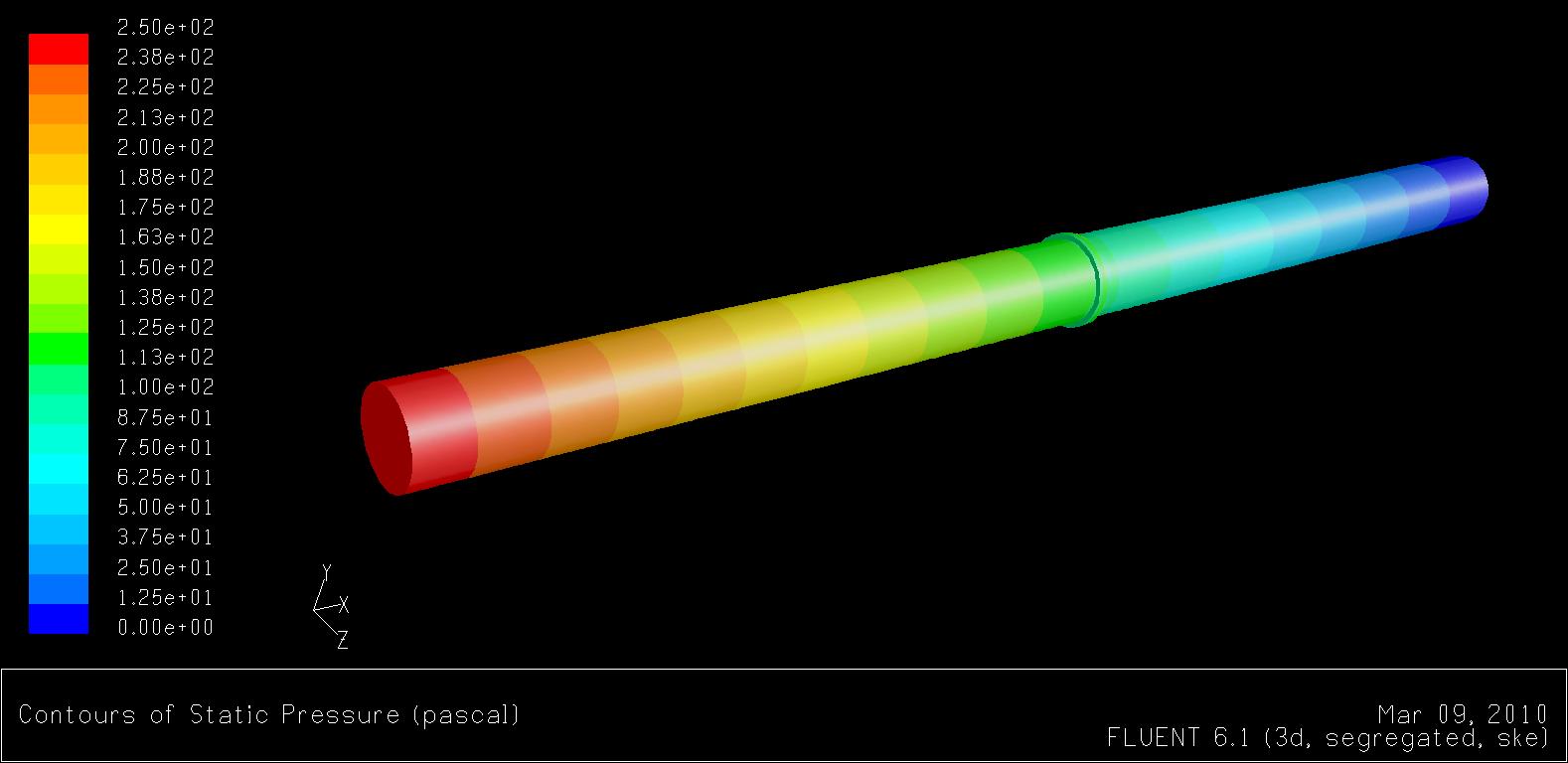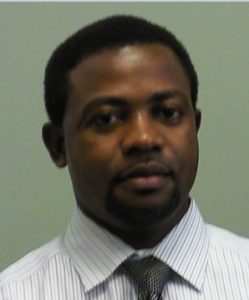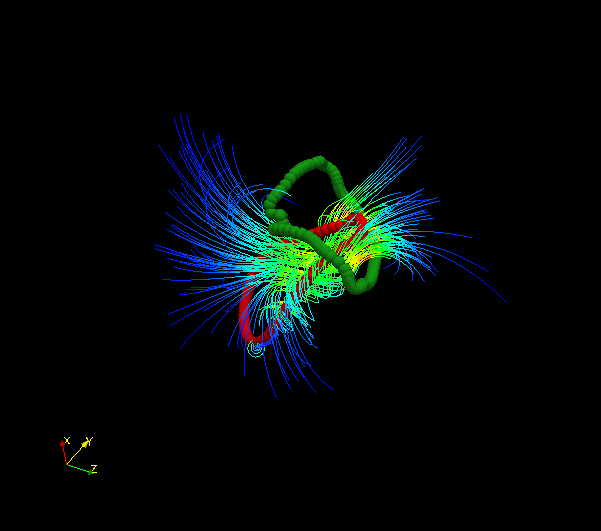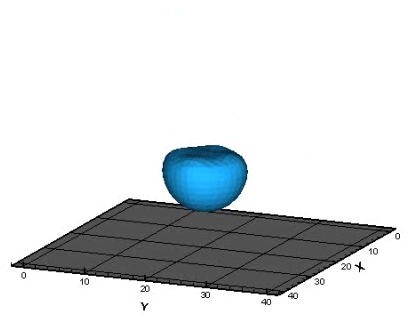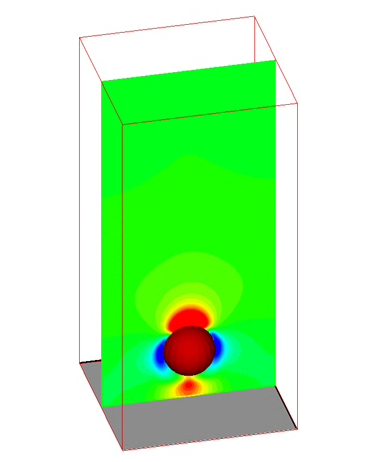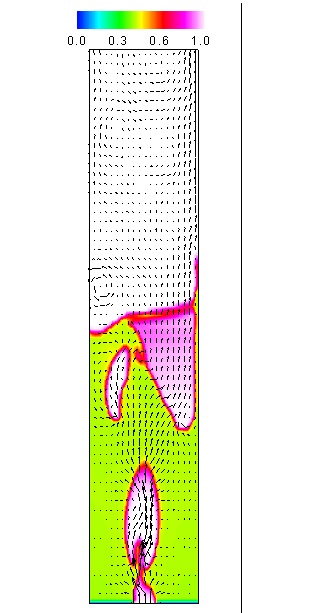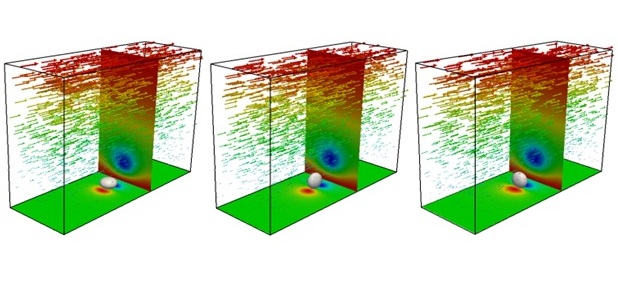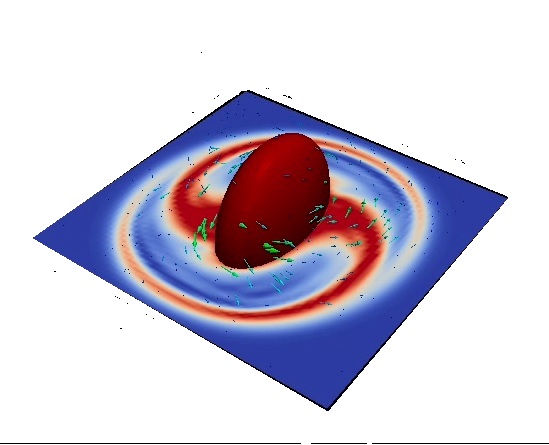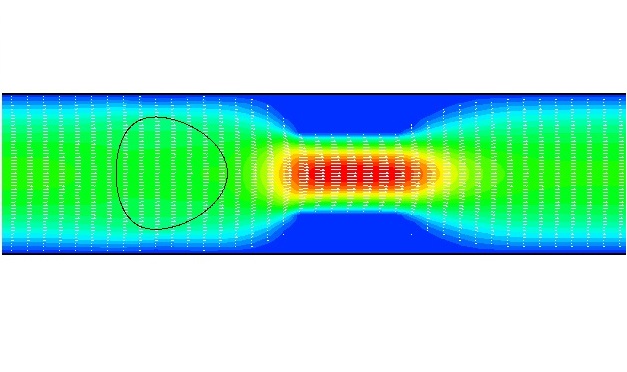- Feng, Z-G, Alatawi, E. S., Roig, A., and Sarikaya, C.(2015), “A resolved Eulerian-Lagrangian simulation of fluidization of 1204 heated spheres in a bed with heat transfer.” ASME Journal of Fluid Engineering, accepted.
- Musong, S. and Feng, Z-G (2014), “Mixed convective heat transfer from a heated sphere at an arbitrary incident flow angle in laminar flows,” International Journal of Heat and Mass Transfer, 78:34-44.
- Feng, Z-G and Musong, S. (2014), “Direct numerical simulation of heat and mass transfer of spheres in a fluidized bed.” Powder Technology, 262:62-70.
- Feng, Z-G (2014),”Direct numerical simulation of forced convective heat transfer from a heated rotating sphere in laminar flows,” Journal of Heat Transfer, 136:041707.
- Feng, Z-G, Ponton, M. E., Michaelides, E. E., and Mao, S-L (2013), “Using the direct numerical simulation to compute the slip boundary condition of the solid phase in two-fluid model simulations.” Powder Tech., 10.1016/j.powtec.2014.01.020.
- Paudel, B., and Feng, Z-G (2013),”Prediction of minimum fluidization velocity for binary mixtures of biomass and inert particles,” Powder Technology, 237:134-140.
- Feng, Z-G (2013),”Forced heat and mass transfer from a slightly deformed sphere at small but finite Peclet numbers in Stokes flow,” Journal of Heat Transfer, 135:081702.
- Obuseh, C.C., Feng, Z-G, Paudel, B.D.(2012),”An Experimental Study on Fluidization of Binary Mixture in Particulate Flows,” Journal of Dispersion Science and Technology 33 (9): 1379-1384.
- Feng, Z-G, and Michaelides, E.E. (2012), “Heat transfer from a nano-sphere with temperature and velocity discontinuities at the interface,” International Journal of Heat and Mass Transfer, 55:6491-6498.
- Davis, A.P., Michaelides, E.E., Feng, Z-G (2012),”Particle velocity near vertical boundaries: A source of uncertainty in two-fluid models,” Powder Technology 220:15-23.
- Feng, Z-G, Michaelides, E.E., and Mao, S.(2012),”On the drag force of a viscous sphere with interfacial slip at small but finite Reynolds numbers.” Fluid Dynamics Research, 44 (2):0255.
- Redrow, J, Mao, S-L, Celik,I, Posada, J.A.,and Feng, Z-G (2011),”Modeling the evaporation and dispersion of airborne sputum droplets expelled from a human cough,” J. Building and Environment, 46(10):2042-2051.
- Yang, B.J., Mao, S., Altin, O.,Feng, Z-G. (2011),”Condensation Analysis of Exhaust Gas Recirculation System for Heavy-Duty Trucks,” Journal of Thermal Science and Engineering Applications, 3(4):#041007.
- Mao, S-L, Feng, Z-G, Michaelides, E.E.(2010), “Off-highway heavy-duty truck under-hood thermal analysis,” Applied Thermal Engineering, 30 (13), 1726-1733.
- Feng, Z-G (2010),”A correlation of the drag force coefficient on a sphere with interface slip at low and intermediate Reynolds numbers.” Journal Dispersion Science Technology, 31:968-974
- Feng, Z-G, Michaelides, E.E., and Mao, S-L(2010),”A three-dimensional resolved discrete particle method for studying particle wall collision in a viscous fluid,” ASME J. Fluids Engineering, 132 (9), #091302.
- Feng, Z-G, and Michaelides, E.E. (2009), “Secondary flow within a river bed and contaminant transport.” Environmental Fluid Mechanics, DOI 10.1007/s10652-009-9132-9
- Feng, Z-G, and Michaelides, E.E. (2009), “Heat transfer in particulate flows with Direct Numerical Simulation (DNS).” International Journal of Heat Mass Transfer, 52:777-786
- Feng, Z-G, and Michaelides, E. E. (2009), “Robust treatment of no-slip boundary condition and velocity updating for the Lattice-Boltzmann Simulation of Particulate Flows.” Computers and Fluids, 38:370-381
|
|
- Smajstrla, K and Feng, Z-G (2014), “A one-dimensional model for gas-solid heat transfer in pneumatic conveying,” ASME 2014 International Mechanical Engineering Congress and Exposition, November 14-20, 2014, Montreal, Canada
- Feng, Z-G and Ponton, M. E., “Smoothed Particle Hydrodynamics (SPH) method for studying heat and mass transfer between fluid and solid.” ASME 2014 International Mechanical Engineering Congress and Exposition, November 14-20, 2014, Montreal, Canada
- Yao, Z., Feng, Z., Qin, Z., & Chen, Z., “Heat transfer enhancement for turbulent flows in corrugated tubes,” ASME 2014 International Mechanical Engineering Congress and Exposition, November 14-20, 2014, Montreal, Canada.
- Musong, S, Feng, Z-G, K. Chen, and Xu, Q-W (2014), “Effects of Rod Shapes on the Drag Force of Particles in a Shear ASME 2014 International Mechanical Engineering Congress and Exposition, November 14-20, 2014, Montreal, Canada
- Feng, Z-G and Roig, A, “Direct numerical simulation of particle heat and mass transfer in a fluidized bed.” ASME Gas-Solid Symposium, 2014, Chicago.
- Feng, Z-G, Musong, S., and Michaelides, E. E., “A three dimensional immersed boundary method for free convection from single spheres and aggregates.” ASME Gas-Solid Symposium, 2014, Chicago.
- Musong, S., Cortina, M., Feng, Z-G, “A three dimensional direct numerical simulation method for solving heat transfer of particulate flows.” 2013 NETL Workshop on Multiphase Flow Science, Morgantown.
- Feng, Z-G, G. Sloan, K. Bhaganagar, and D. Banerjee, “Numerical simulation of nanoparticle clustering with experimental validation,” APS Division of Fluid Dynamics, November 18-20, 2012; San Diego, California.
- Feng, Z-G, and M. Andersson, “Modeling flows in porous media using immersed boundary based lattice Boltzmann method,” ASME International Mechanical Engineering Congress & Exposition, Nov.10-15, Houston, TX; Paper Number: IMECE2012-89427.
- Sloan, G., Feng, Z-G, K. Bhaganagar, K, and Banerjee, D., “Coupled direct numerical simulation and experimental approach to develop framework for nanofluids,” ASME International Mechanical Engineering Congress & Exposition, Nov.10-15, Houston, TX. Paper number: IMECE2012-89271.
- Cortina, M., and Feng, Z-G, “A comparable study on particle sedimentation by the resolved discrete particle method and two-fluid model,” 2012 San Antonio Simulation and Visualization Symposium, Nov. 12-13, 2012.
- Feng, Z-G, Feng, Y-S, and M. Andersson, “Shape effects on the drag force and motion of nano and micro particles in low Reynolds number flows,” ASME International Mechanical Engineering Congress & Exposition, Nov.10-15, Houston, TX. Paper number: IMECE2012-89469.
- Feng, Z-G, Musong, S., Sloan, G., Anderson, M., and Stewart, E., “The effect of neighboring particles on the dynamics of a particle settling in a viscous fluid,” DOE/NETL Conference on Multiphase Flow Science, May 22-24, 2012, Morgantown, WV.
- Musong, S. and Feng, Z-G, “The effect of model parameters of the soft-sphere scheme on particle-particle collisions,” DOE/NETL Conference on Multiphase Flow Science, May 22-24, 2012, Morgantown, WV.
- Feng, Z-G, Sloan, G., Musong S., Davis, A. D., Ebadinia, K., Cook, S., “Use of a DNS method to reduce uncertainties in two-fluid models,” 2012 University Coal Research/HBCU and Other Minority Institutions Contractors Review Conference, May 30-31, 2012, Pittsburg, PA.
- Feng, Z-G., Michaelides, E. E., and Mao, S, “A multilevel simulation approach to derive the slip boundary condition of the solid phase in two-fluid models,” 64th Annual Meeting of the APS Division of Fluid Dynamics, November 20-22, 2011; Baltimore, Maryland.
- Z-G Feng, “Computational Modeling of Biological Flows,” Navy Tri-Service Research Laboratory, November 4, 2011.
- B. Paudel and Z-G Feng, “Fluidization of inert, biomass particles and biomass/sand mixtures,” 4th ASNEngr Annual Conference and Meeting and 4th CAN-USA Annual Development Conference. July 09-10, 2011. Houston, Texas.
- Feng, Z-G, et al., “Use of an Accurate DNS Particulate Flow Method to Study Boundary Conditions of the Solid Phase in Two-Fluid Model,” the 2011 University Coal Research/HBCU Conference, June 7-8, 2011. Pittsburgh, Pennsylvania.
- Davis, A. P., Michaelides, E. E., and Feng, Z-G, “Particle velocity near vertical boundary a source of uncertainty in two-fluid models,” 7th International Conference on Multiphase Flow, FL. May 30-June 4, 2010.
- Feng, Z-G and Michaelides, E.E, “Application of the Immersed boundary method and direct numerical simulation for the heat transfer from particles,” ASME Fluids Engineering Division Summer Conference, Vail, Colorado, August 2009.
|
|




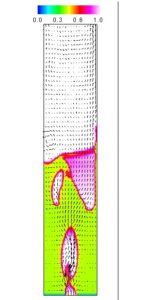 fluidization of particles in a reactor.
fluidization of particles in a reactor. 




